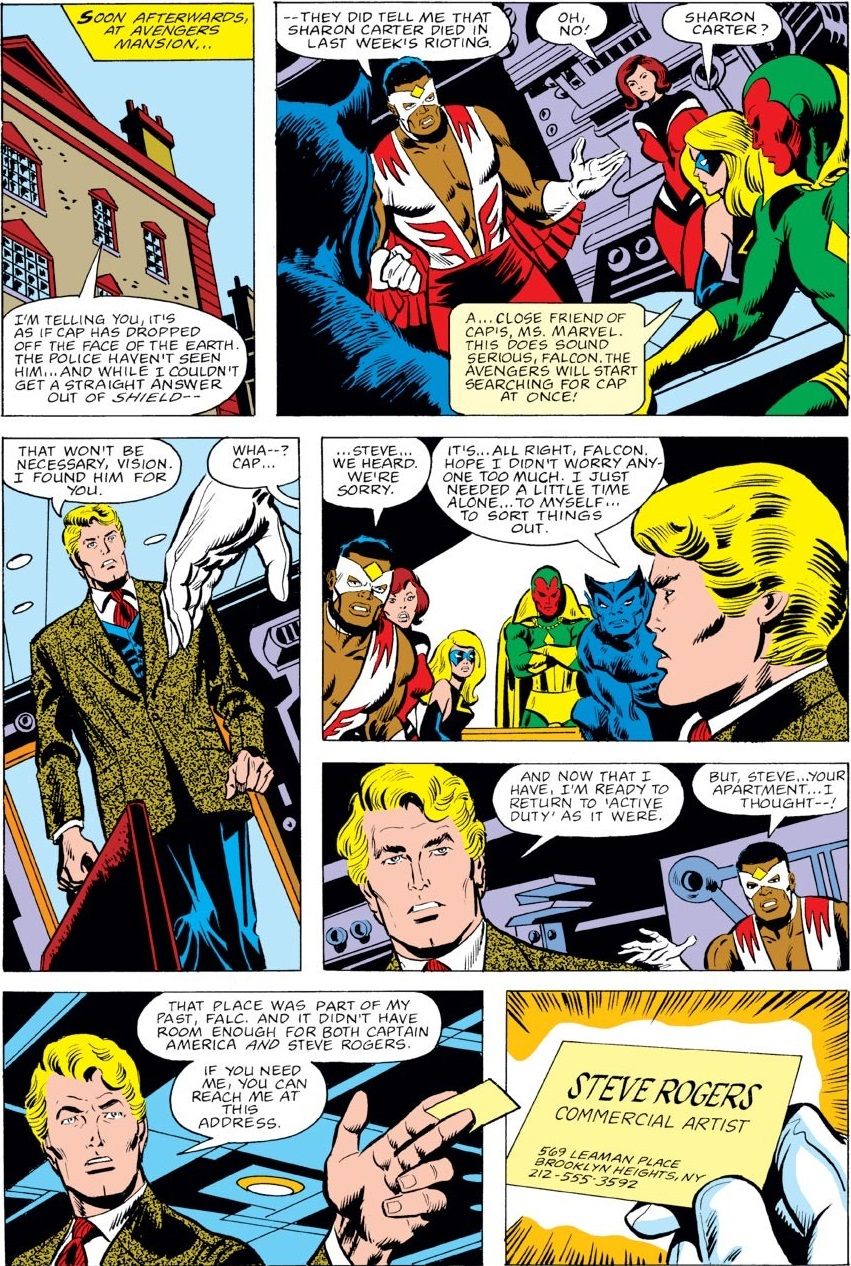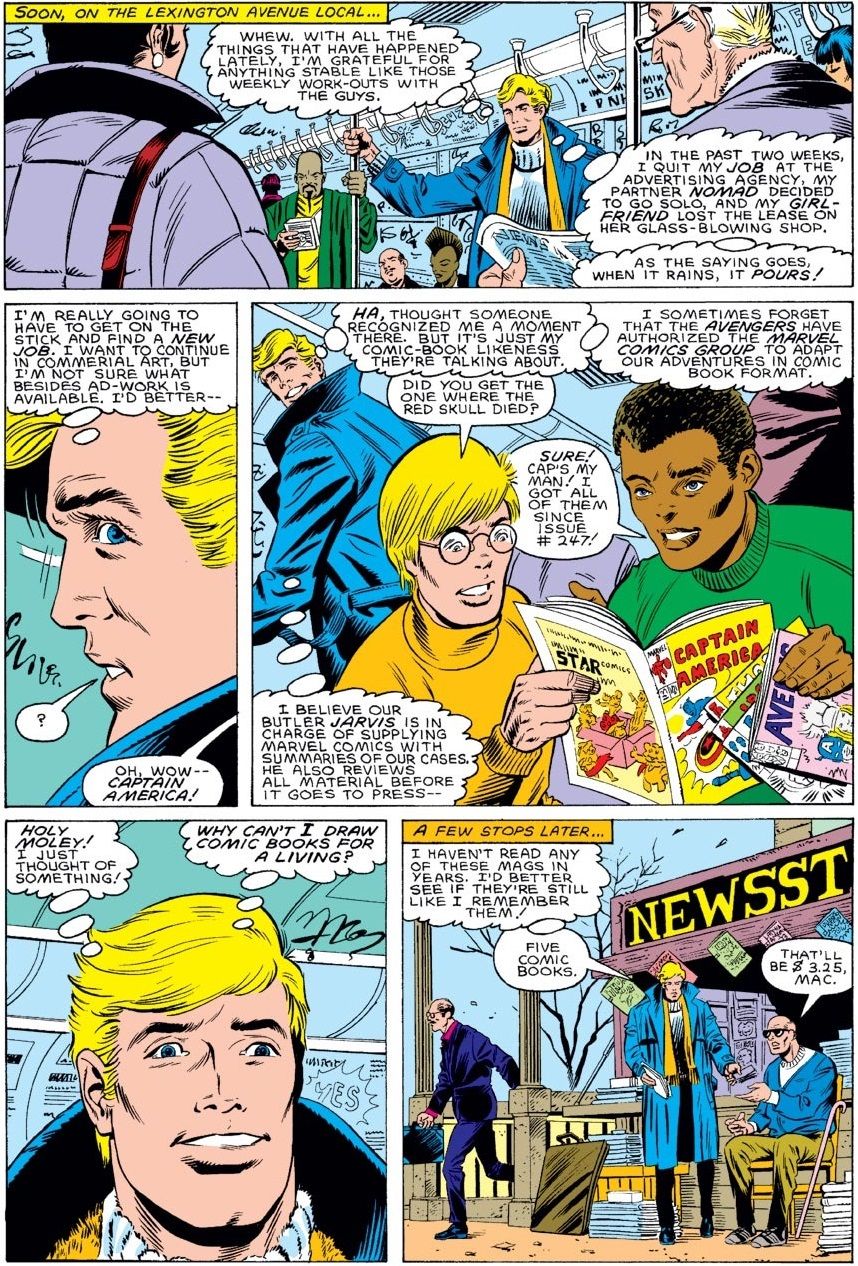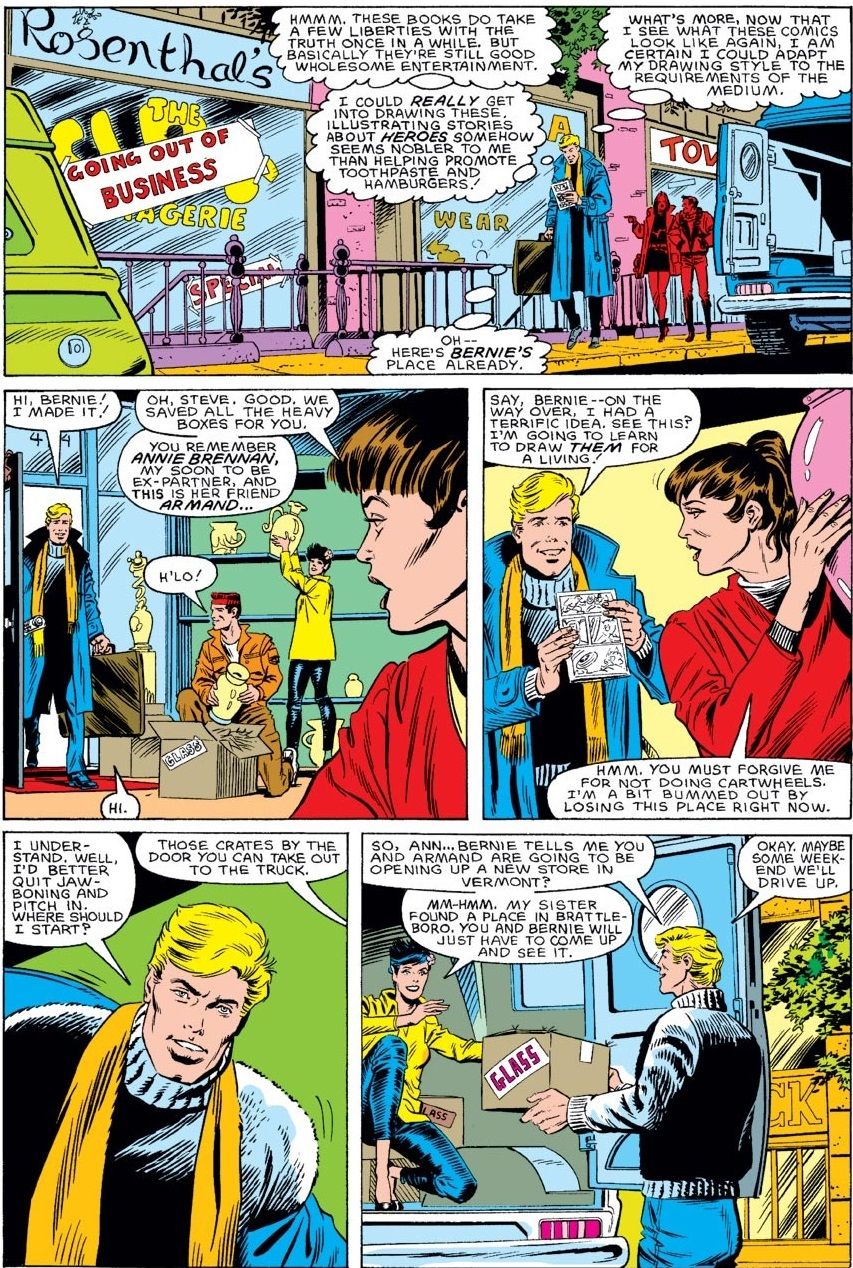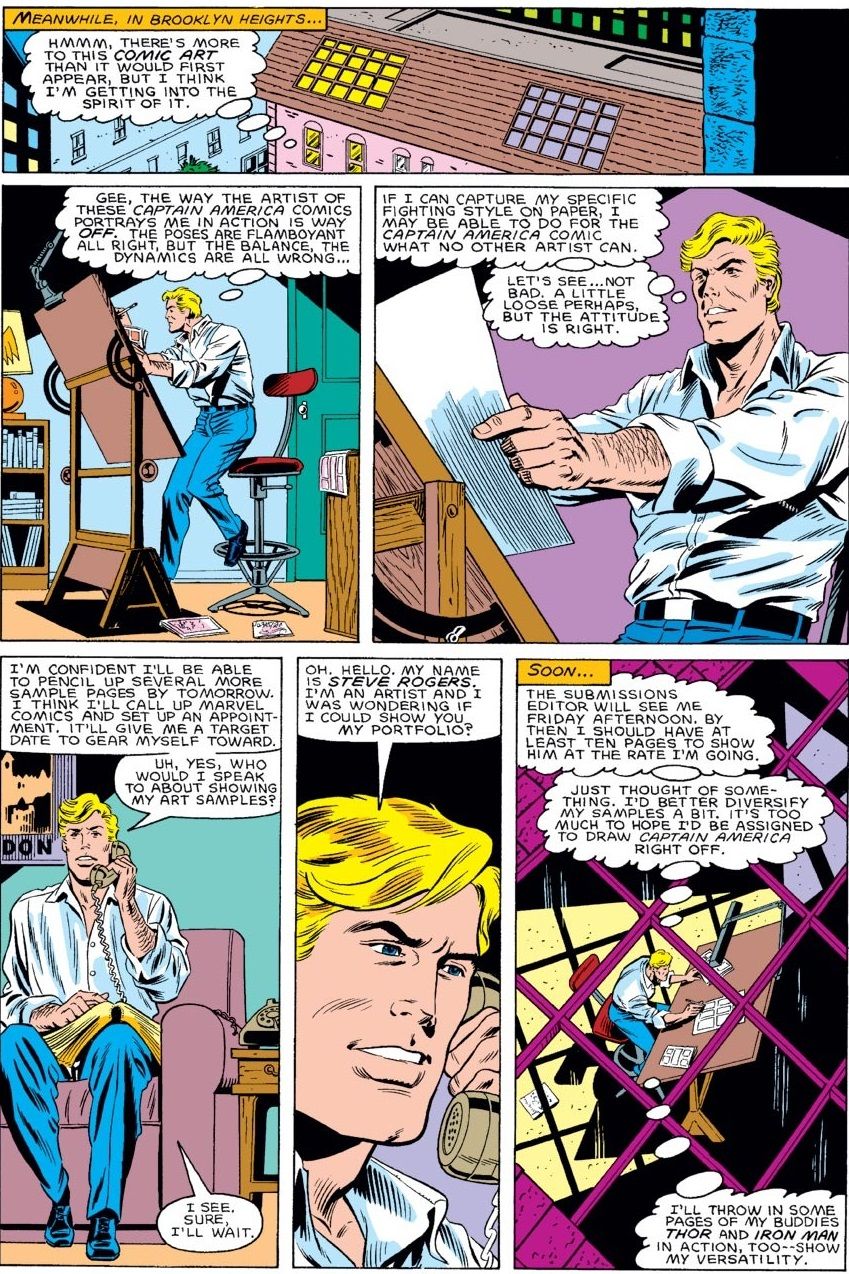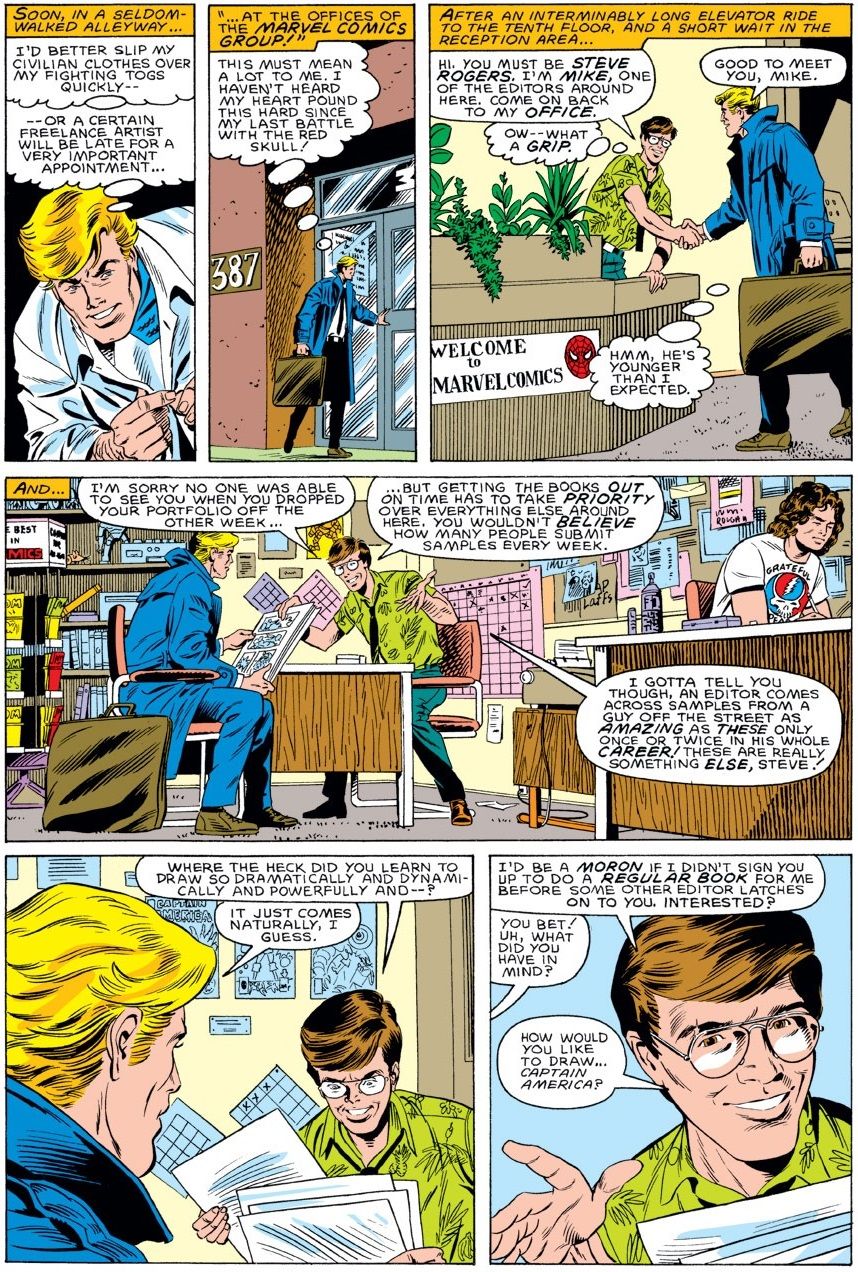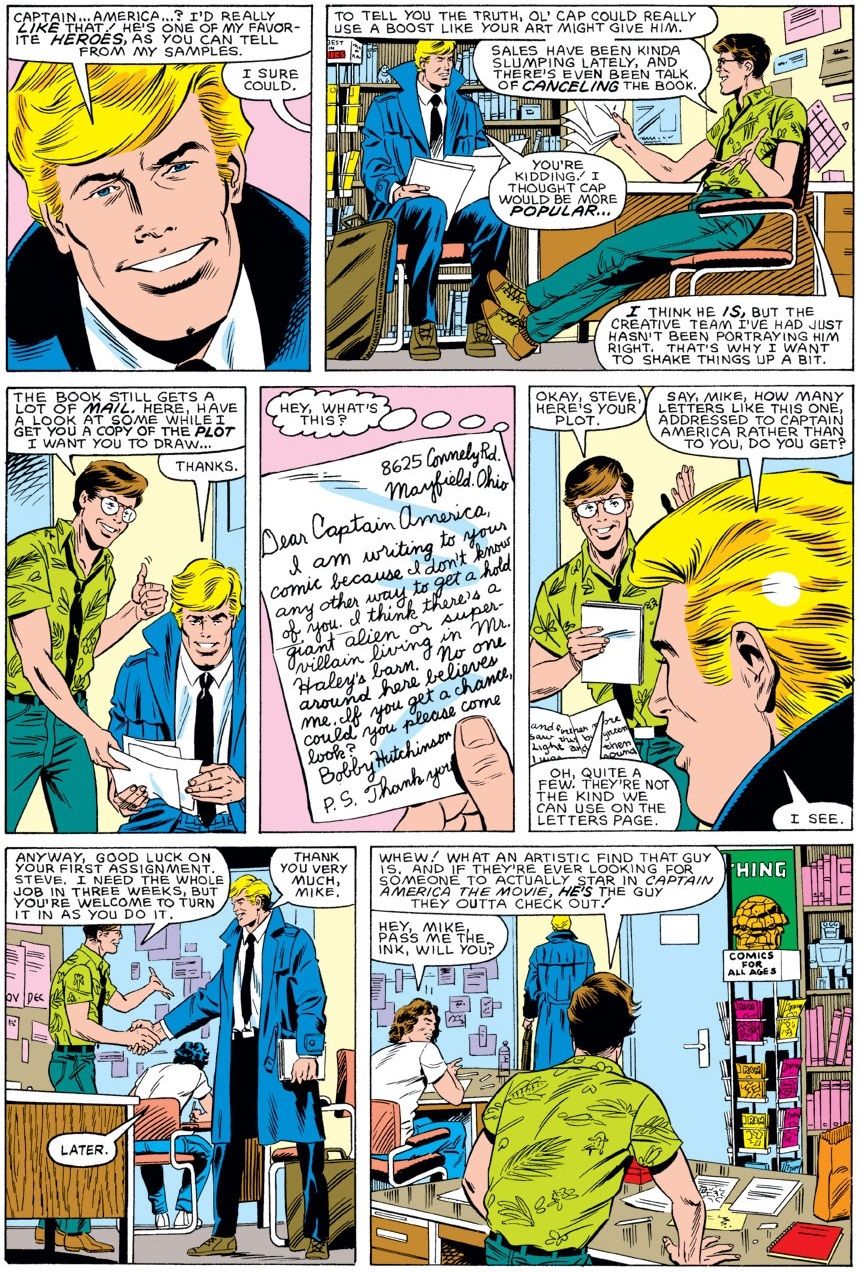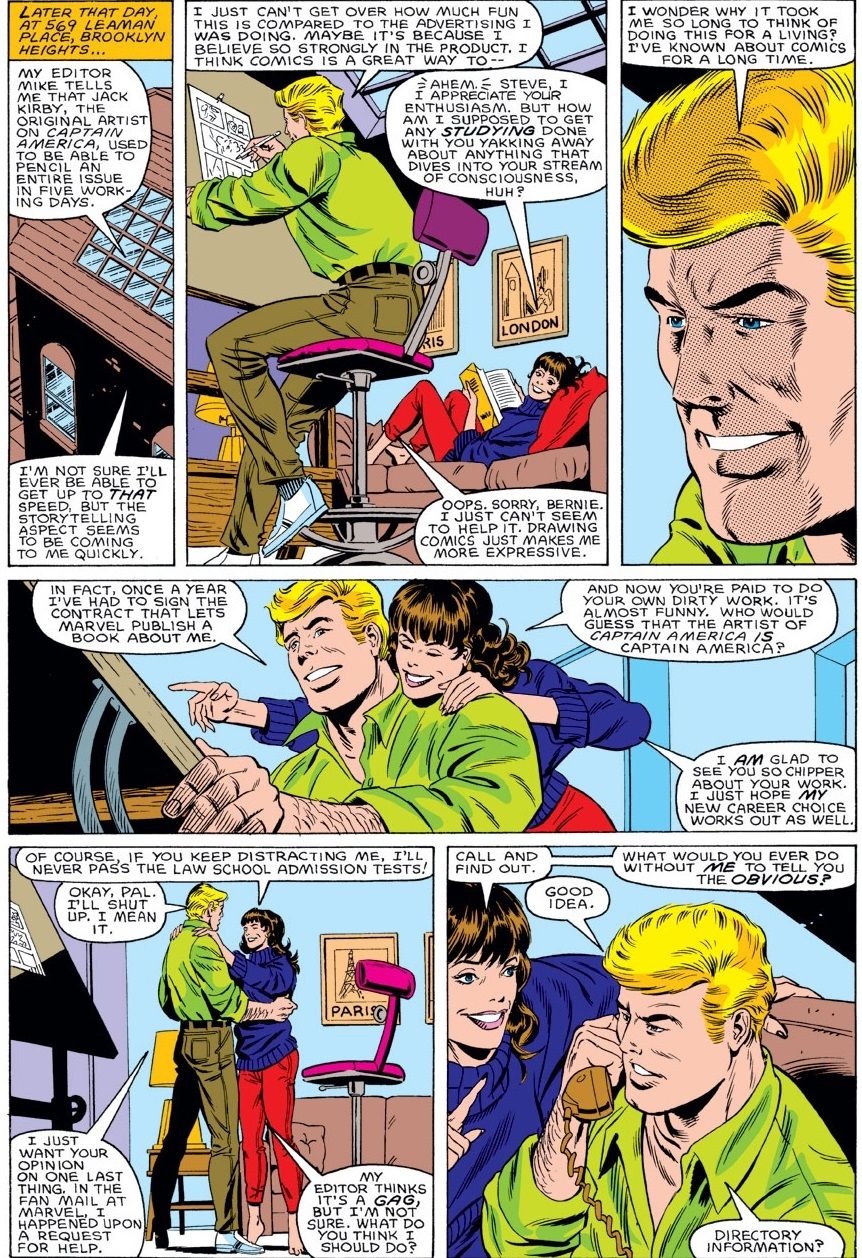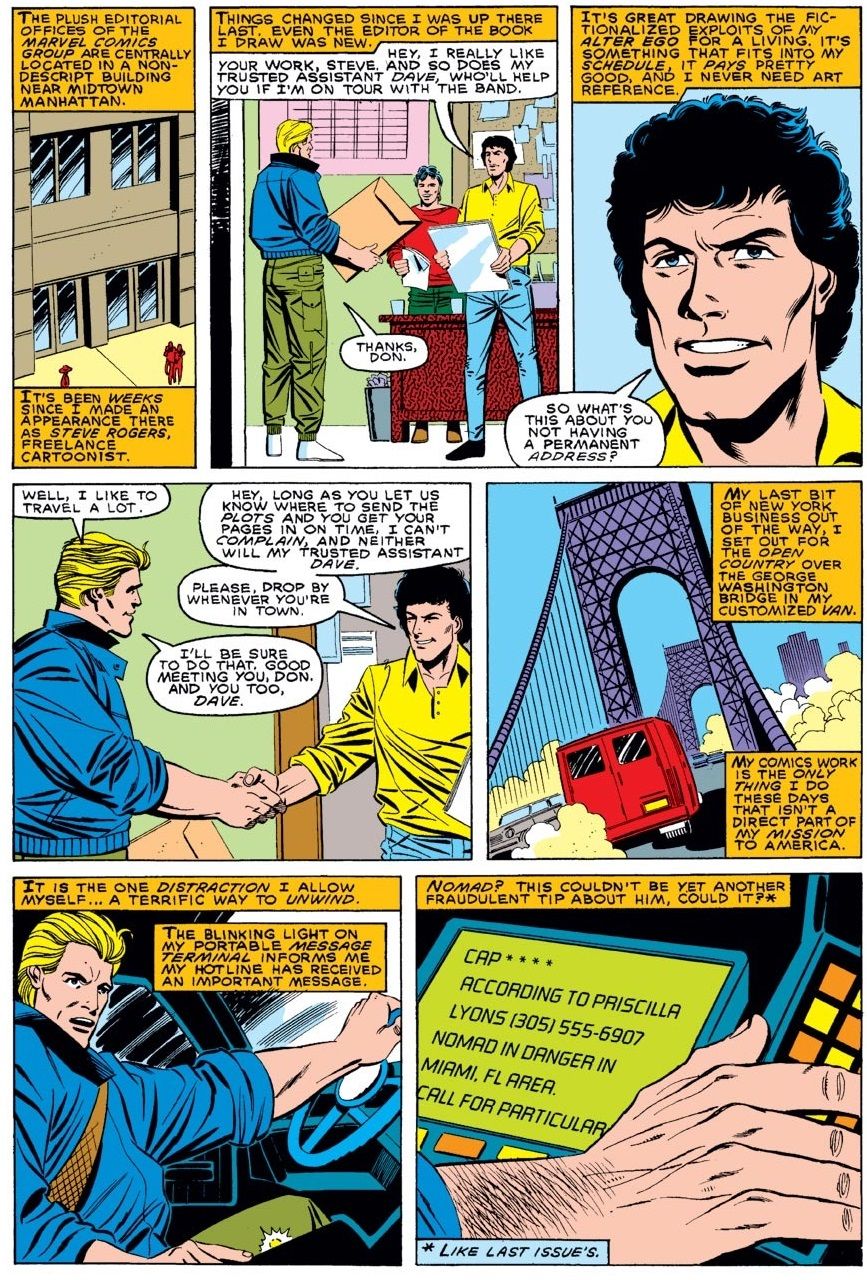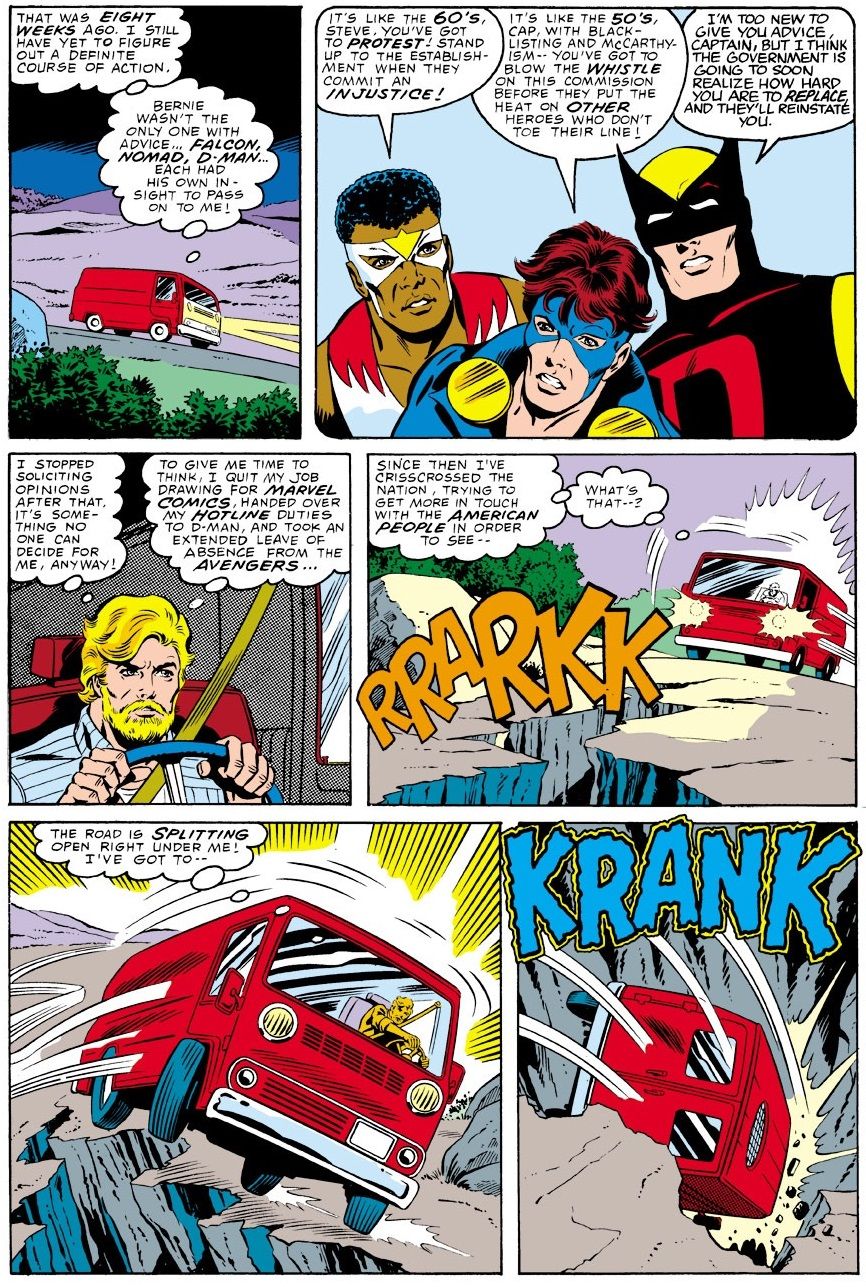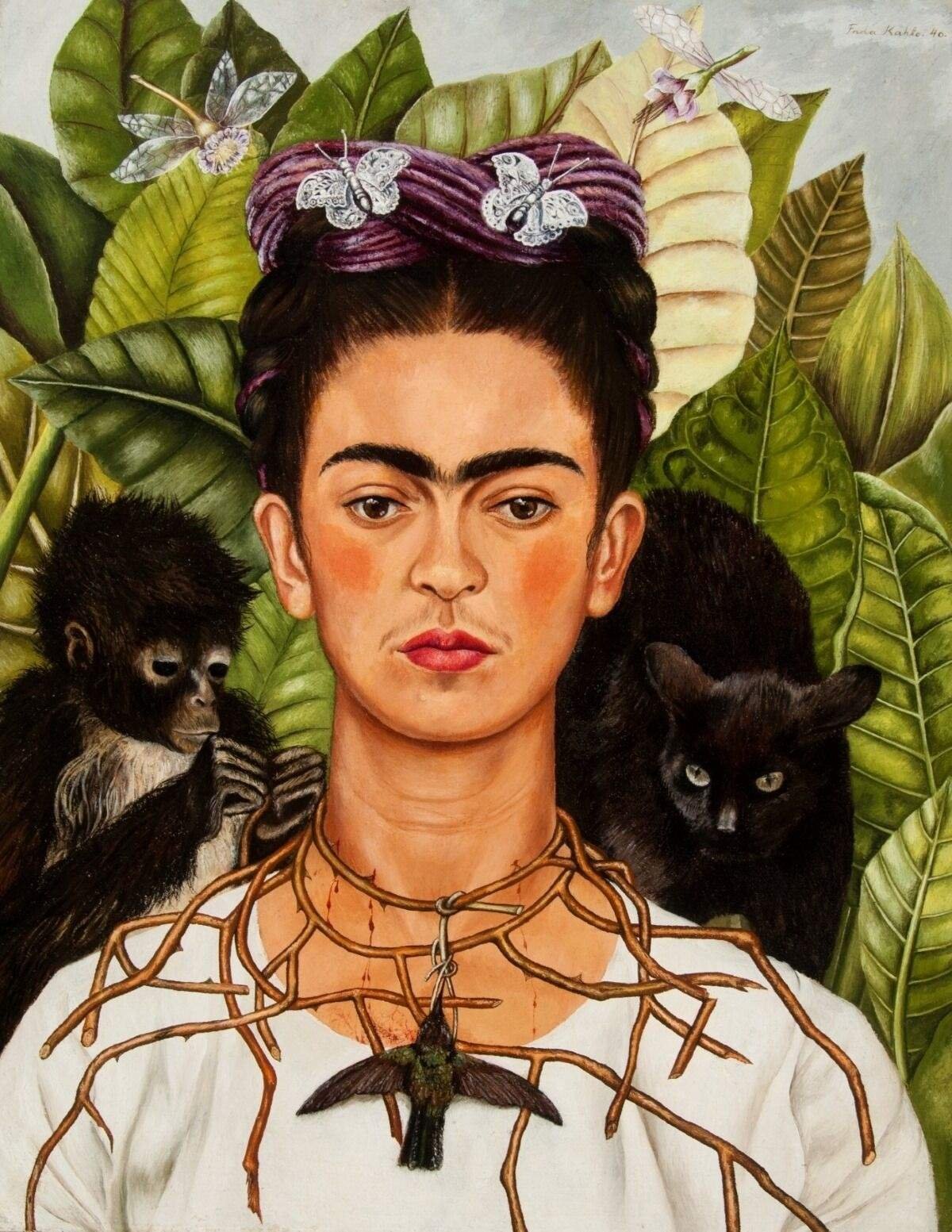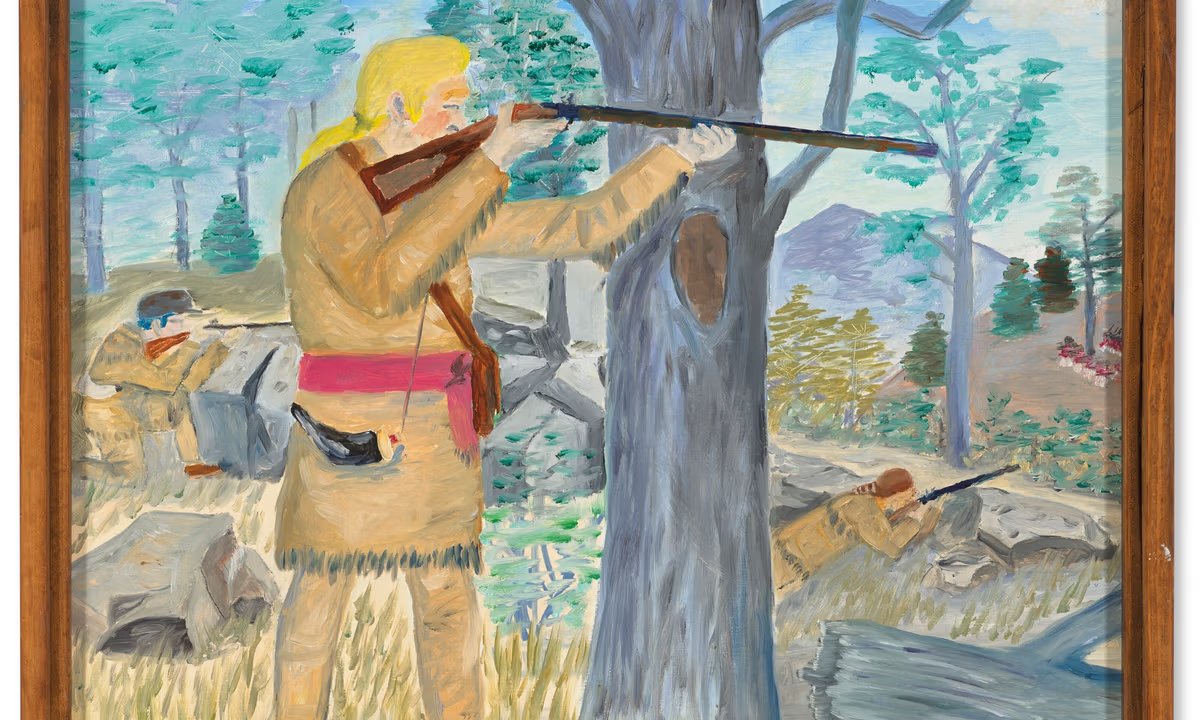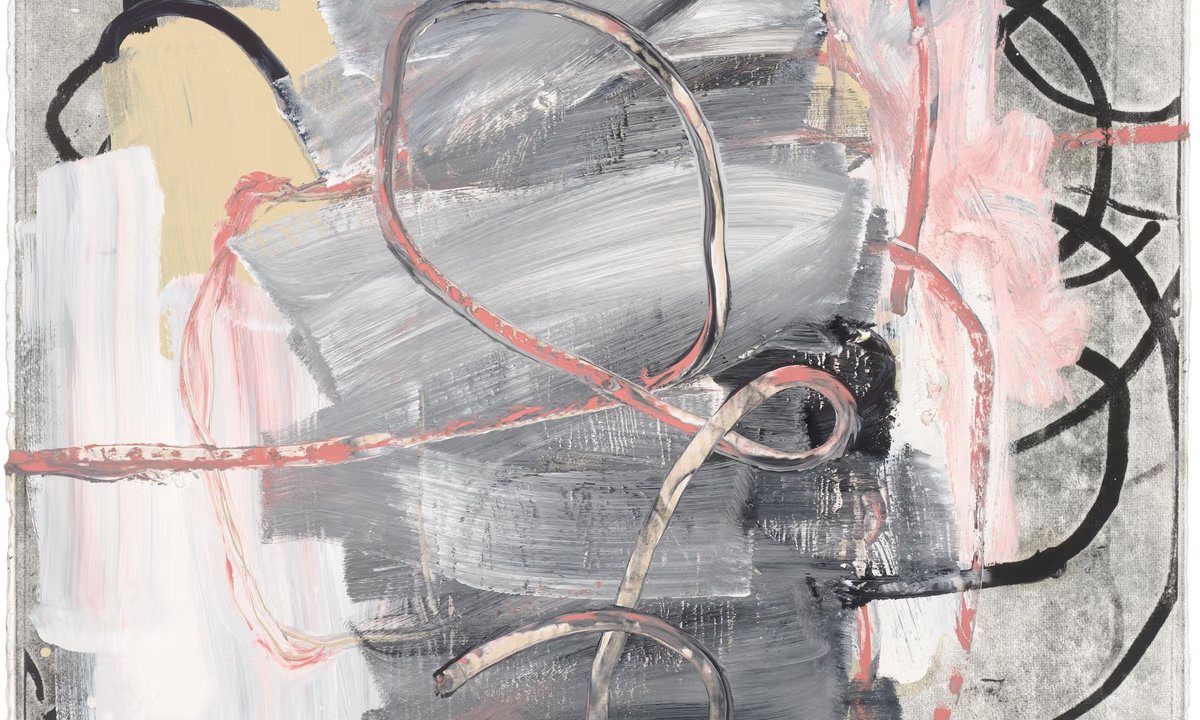Summary
- Captain America briefly worked as an artist on his own comic book series. A unique twist on a classic superhero job!
- Captain America’s art skills landed him a role as an artist on his comic book series, showcasing his talents both in and out of costume.
- When Steve Rogers briefly lost his title as Captain America, he quit his comic book job
This is “Working for a While,” a feature that spotlights the lesser-known jobs that our favorite superheroes have had over the years (mostly in their secret identities, but sometimes I’ll feature examples of jobs superheroes have had in their costumed identities, as well). Today, we look at how Captain America was briefly the artist on his own comic book adventures!
One of the major influences of the Marvel Cinematic Universe on the world of superheroes is that it really seems to have embraced the concept of the superheroes just being themselves, and not having a secret identity. Spider-Man as Peter Parker was really the only example of a Marvel Cinematic Universe character with an actual secret identity.
That, of course, was very different from the past, when ALL of Marvel’s superheroes had secret identities, even Bruce Banner, who literally transformed into the Hulk at various inopportune times, and yet for a few years, no one pieced together that he was the Hulk. With the elimination of secret identities, superhero jobs have also become less common, as now they all seem to be sort of quasi-government operatives or something like that. However, in the past, they all had to find work, and in the case of Captain America, he became an artist who eventually became the artist on Captain America’s own comic book!
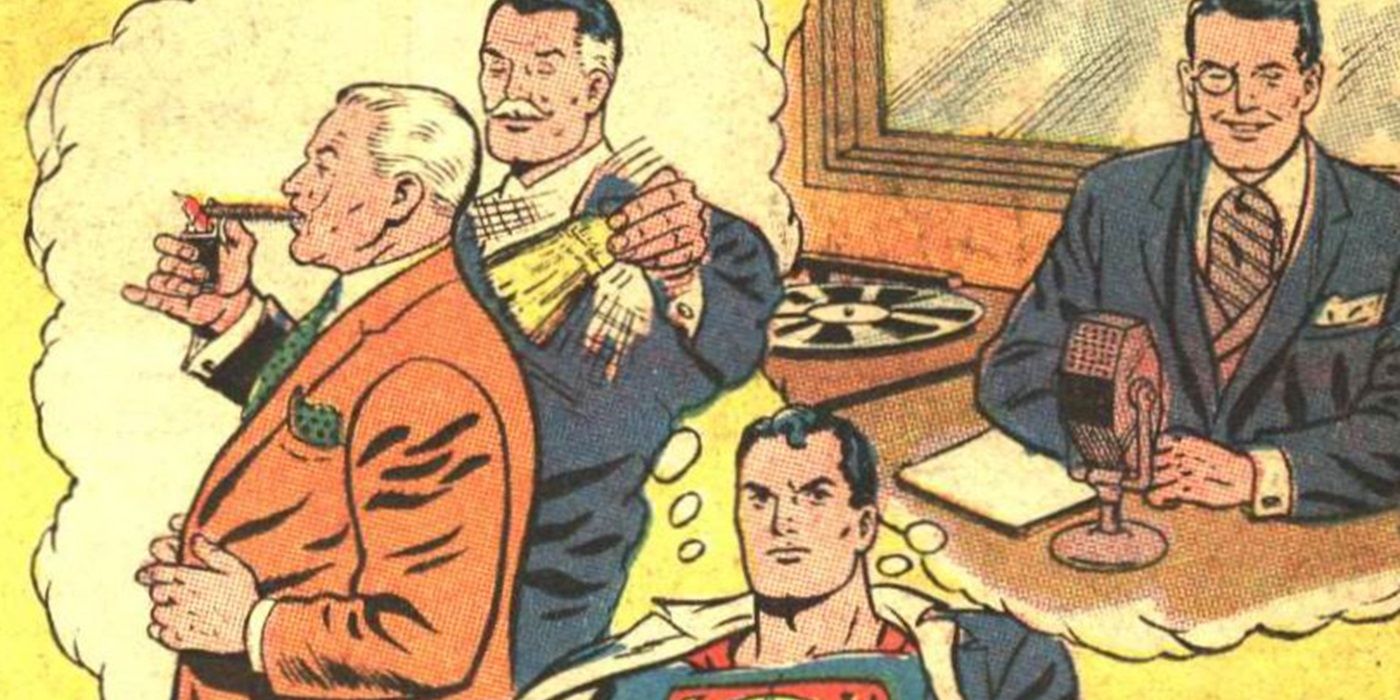
When Superman Had to Briefly Become a Butler and Then a British DJ
In a feature spotlighting some of the less famous jobs of superheroes, CSBG looks at Superman’s time working as a butler, and then a British DJ!
How did Captain America get hired as the artist on his own comic book?
As I noted in an old When We First Met on the topic, after Captain America’s longtime love interest, Sharon Carter, was “killed off” (she was later revealed to have survived during Mark Waid and Ron Garney’s run on the series, and, really, it’s so funny that her “death” was confirmed by a videotape recording in a storyline involving Doctor Faustus, a guy who manipulates people into thinking ALL sorts of weird stuff). Cap settled into living in Brooklyn, and in Captain America #237 (by Chris Claremont, Roger McKenzie, Sal Buscema, and Don Perlin), Cap decides to pursue a career as a commercial artist (the commercial artist idea MIGHT have existed before this point, but this was when he really went for it)…
Steve Rogers served as a commercial artist for basically the rest of the 200s, but various writers had him work for various different agencies and book companies. J.M. DeMatteis had Steve work for an advertising agency.
The big change happened early in Mark Gruenwald’s run on Captain America, as Steve (who had to be out of town for a long time for an adventure) is fired by his agency. Cap realizes that he needs an art gig that has more flexibility. Then, a chance encounter on the subway gave him a great idea in Captain America #310, when he overhears two kids talking about comic books…
He buys some comic books, and as he examines them, he determines that he could draw them, and they’re a lot more entertaining than doing advertising drawings…
In addition, his insights into his own body allow him to really get Captain America’s depiction done right…
In the next issue, he is quickly hired by Mike Carlin (editor of Captain America at the time)…
Carlin is very impressed by Rogers’ art skills, and he thinks Rogers could also play Cap in a movie!
Interestingly, Carlin reveals a letter to the comic book from a Captain American fan, and this inadvertently gives Captain America an idea to set up a national hotline for people to call in with their tips for Captain America.
We see later that Steve is a very fast artist, and so he draws a complete issue quickly enough that he can go away on missions for a long time, and still not mess with his monthly deadline…
It was a clever concept by Gruenwald.
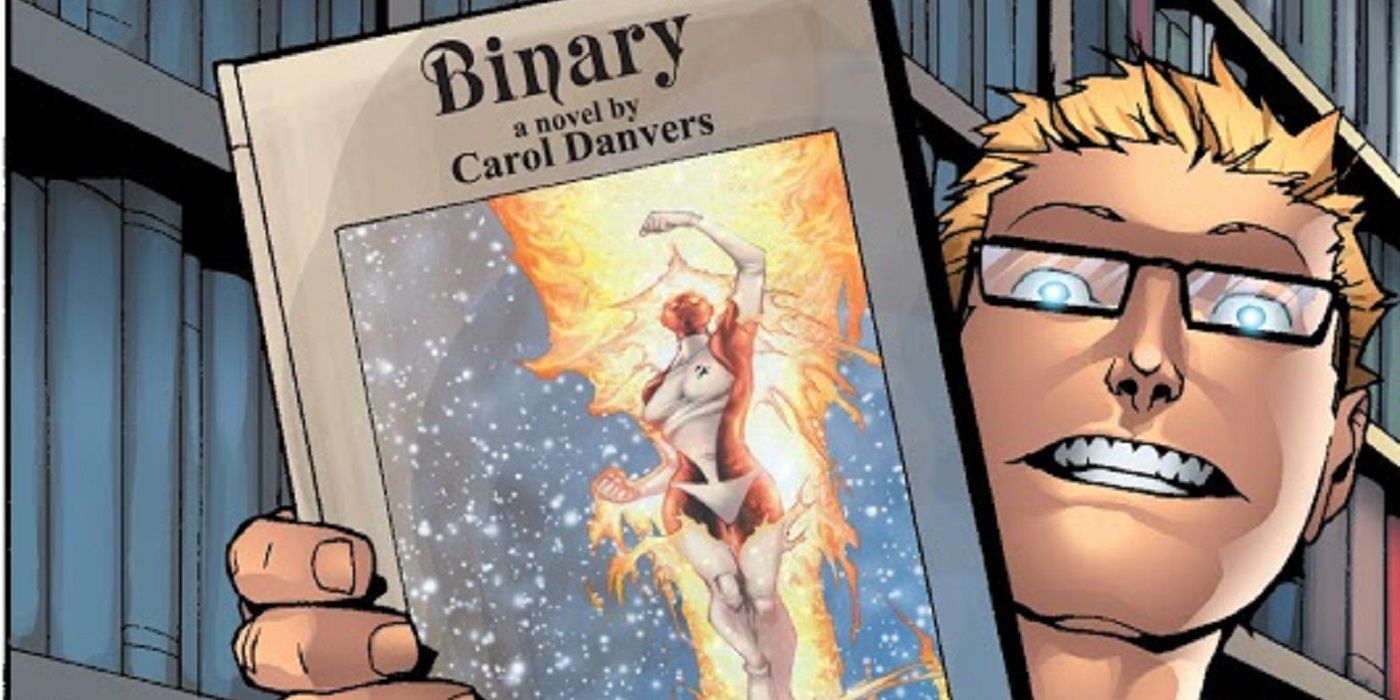
That Time When Carol Danvers Was a Science Fiction Novelist
In a feature spotlighting some of the less famous jobs of superheroes, CSBG looks at Carol Danvers’ time as a science fiction novelist.
When did Captain America stop drawing his comic book series?
Carlin soon left Marvel to go work for DC (eventually taking over the Superman books, and being the driver of The Death of Superman event), and so Don Daley took over editorial duties on Captain America, both in the real world, and in the Marvel Universe, along with his assistant editor, David Wohl.
Steve meets his new editors in Captain America #325 (by Gruenwald, Neary and Beatty)…
As noted, Cap was so inspired by the letter written in to the Captain America comic book that he now has a hotline, and so Captain America obviously needs the freedom to travel the country, and luckily, Daley was fine with giving Steve Rogers that freedom, as well (Daley was in bands both before, and after, his time as a Marvel editor).
However, soon after this, the United States government effectively forced Steve Rogers to give up being Captain America, surrendering his costume and his shield to the new Commission on Superhuman Activities, and barred Steve from using the name, or the costume, of Captain America.
The series then seemingly switched to being about the NEW Captain America, the anti-hero formerly known as Super-Patriot, who had butted heads with Captain America in the year or so before this big change. However, that was just a bit of sneakiness by Gruenwald to make readers think that Steve Rogers was really out of the book. In Captain America #336, Gruenwald (and artists Tom Morgan and Dave Hunt) checked back in on Steve Rogers, who now has a beard, and rides around the country in a truck, anonymously righting wrongs when he has the chance.
He also explains that he quit his job at Marvel…
Years later, Steve Rogers would return at least once to draw an issue of Captan America, but that’s a story for another day…
Okay, folks, I’m sure you all have plenty of suggestions for this feature, so let me have ’em at brianc@cbr.com!


